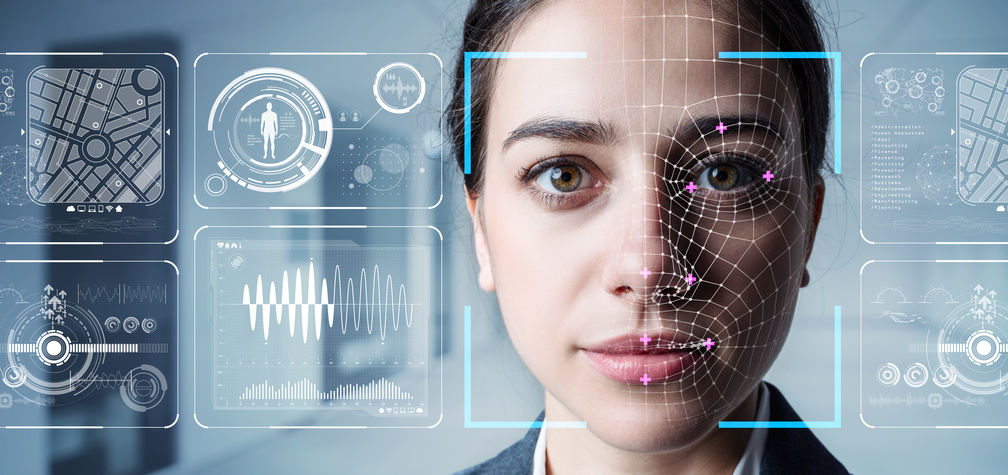Table of Contents
Meta-description
Explore the working mechanism of biometric facial recognition technology in this digital landscape and understand how it helps in combatting identity theft.
Biometric facial recognition technology is an advanced security tool in modern identity verification solutions. It transforms how individuals are authenticated across various sectors. This advanced technology utilizes unique facial features to identify individuals accurately and offers a seamless authentication process. It analyzes face features to identify variations and report accordingly if any are found. Thus, it enhances accuracy by verifying identities smoothly. Its widespread utilization in various sectors like banking, healthcare, and security highlights its transformative impact, enhancing the operational efficiency of the system.
The facial recognition market is expected to reach a target of about $4.94 billion in 2024. In terms of market size, the United States will have the largest share, with an expected value of around $1.316 billion in 2024. This technology has the ability to accurately verify identities based on unique facial features. It has improved efficiency by ensuring fraud prevention efforts in an increasingly digital age.
Biometric Facial Recognition Technology – A Quick Overview
Biometric facial recognition technology is an advanced method that utilizes facial features to validate user’s identities. It scrutinizes unique characteristics such as the distance between eyes or nose shape through advanced machine learning algorithms and artificial intelligence. This is done by creating a digital design of the user’s face, known as a biometric template. When a customer tries to access any type of system, their facial features are scanned and analyzed against digital Technology stored in authorized databases to authenticate their identities. Its algorithms identify imposters in real-time and prove them as an advanced identity verifier solution in this digital world.
Working Mechanism of Biometric Face Recognition Process
Biometric face recognition deep learning has a series of procedures designed to validate users according to their facial features. There are different steps involved for a complete understanding of biometric facial recognition technology and explained below:
- The system first detects a face in the image and video frame before starting the verification process. Advanced algorithms are utilized to scan the biometric information Technology and identify facial features accurately.
- Once the face is identified, the system adjusts it in a uniform position and ensures steady alignment for following scrutiny and comparison Technology. This arrangement step combat variations caused by disparities in different angles.
- Facial features like jawline, nose, mouth, and eyes are extracted from aligned captured images. These extracted features serve as the base for designing a particular Technology that encompasses the user’s distinct facial features.
- A biometric Technology is created using extracted facial characteristics that the system usually makes in the mathematical representation. The designed template is utilized to encode the important traits that are essential for detection and securely store the facial recognition database for future cross-checking.
- When the users try to get access to a particular system, the facial features are scanned and a new biometric Technology is designed accordingly. This freshly created template is again compared with stored tamplated to identify potential fraudster.
- To identify the similarity between the newly captured and biometric Technology, the system assigns a risk score to the profile to complete scrutiny. A higher score depicts a closer match between the facial features and authenticating the user’s identity with greater accuracy.
- According to the similar risk score and predetermined thresholds, the system makes a certain decision to either grant or deny access to the customers. This defined decision pivots the degree of resemblance between the captured face features and the stored Technology in the databases.
- Feedback obtained from the decision making process is invaluabe for updating the system’s algorithms. With defined refinement, the technology increases the accuracy and reliability over the particular time and adapting to evolved facial features and environmental conditions.
Advantages of Facial Recognition Solution in the Digital World
A biometric facial recognition solution is essential in today’s digital world because it provides a highly secure and convenient method of identity authentication. By examining unique facial appearances, such as the distance between eyes, nose length, and sharpness of jawline, this technology ensures accurate identification. It enhances security by preventing unauthorized access and streamlines user experiences by mitigating the need for passwords. Facial recognition systems are increasingly integrated into various sectors like banking, healthcare, and law enforcement to improve efficiency and reduce potential frauds such as identity theft and monetary losses. It enhances the overall safety in the digitally connected society.
Final Verdict
Biometric facial recognition technology is a digital system designed to identify individuals based on unique facial characteristics. It plays a vital role in increasing security protocols by providing an extra layer of authentication. This technology is majorly utilized in varied departments to verify identities quickly and efficiently. By ensuring its advanced features, businesses or enterprises can enhance their integrity in this digital world.
For More Information Please Visit These Websites Viprow And Vecteezy

